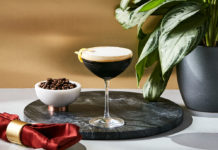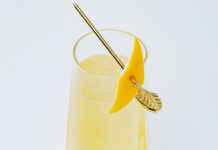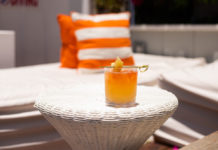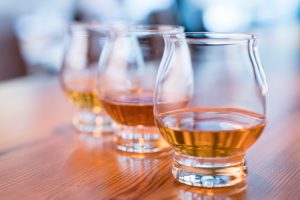 In today’s drinkware market, there are more options than ever before. So how do you choose what’s best?
In today’s drinkware market, there are more options than ever before. So how do you choose what’s best?
Select drinkware that enhances your business in three ways. Great drinkware should: 1) fit with and enhance your brand; 2) function practically; and 3) improve your bottom line.
Brand Fit
It’s important to find drinkware that not only fits your brand, but also helps to exemplify and define it. “Restaurant guests today are really seeking an experience,” says Jerry Moore, Senior Category Manager of Beverageware at Libbey. “It’s often not enough to ‘just’ serve good food and drinks. Operators are being driven by consumers to take food and beverage presentation to the next level.”
Select drinkware that reflects your ideal atmosphere and aesthetic. Companies like Libbey offer themed collections that make it easy to choose a look and stick with it. For instance, the Renewal collection has cut glass with a cocktail focus, Radius centers around glasses with a distinctive faceted design, and Circa Cocktails features vintage designs inspired by the 1930s.
If your bar is known for a particular beverage, specialty glasses can elevate its look and taste. It’s worth investing in glasses that showcase your most popular drinks because your patrons will associate this superior presentation with your brand. For example, Moore says, “To get the aroma and flavor from a nice bourbon, having the proper glass is paramount.”
To this end, Libbey spent a year developing its new Official Tasting Glass for the Kentucky Bourbon Trail. “It became very apparent through the process that the glassware design makes an incredible difference in bringing out the aroma and flavor of the bourbon,” says Moore. “This research was used in the design of Libbey’s new glass in order to get the full bourbon experience. During the bourbon tasting at the Libbey booth at the NRA show, a gentleman shared with me that he had been drinking a certain type of bourbon for many years and had never tasted flavors the way they were presented in the Kentucky Bourbon Trail Tasting Glass! He was blown away!”
Another strategy is to consider what values align with your brand. For instance, if you’re located in an environmentally conscious area, your clientele might appreciate more sustainable products.
Tobias Brandenburg, who oversees Sales and Business Development for WonkyWare, incorporated local environmental values into his product’s design. “In 2017, being socially and environmentally responsible is not only a good business practice, it is our responsibility,” explains Brandenburg. “For us, it was an easy choice. We’re located in a part of Wisconsin where eagles fly over our parking lot and you have to drive no more than five miles to be on a lake or river. The environment and keeping it this beautiful is on our mind.
“While the nature of plastic does not currently allow us to be 100% zero impact, we do what we can to minimize output.”
Because WonkyWare is made out of Tritan—a new high-quality plastic—it’s lighter than glass, meaning it requires less energy to ship. In addition, both the drinkware and its packaging are 100% recyclable.
Finally, don’t forget the simple but classic logo! Brandenburg suggests buying drinkware that has your logo on it—a service WonkyWare provides.
Branded drinkware has the obvious advantage of making your logo visible throughout your bar, but Brandenburg also has another interesting take—branded drinkware transforms theft into an opportunity.
“Having your logo on beverageware that walks out of the door is some of the cheapest advertising you will ever do,” says Brandenburg. “The more someone uses that branded item in their home, the more free advertising you’re getting. Think of all the locations a virtually unbreakable logo pint will travel: campsite, tailgates, and barbecues, to name a few.
“It’s like having a tiny, traveling billboard.”
Brandenburg has a fun suggestion for engaging patrons with branded drinkware, “Challenge your customers to take a photo of your pint in the most exotic or crazy location for a prize!”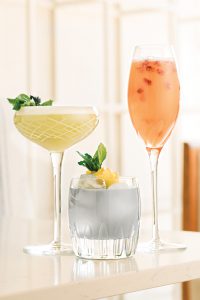
Functionality
When it comes down to it, your drinkware must survive a busy, crowded environment. A single glass can cycle through the hands of multiple customers each day. “Glassware should be durable and service friendly,” Moore says.
Jill Connelly, Director of Operations at BarLuxe, says, “We are seeing more bars and restaurants switching to non-glass alternatives due to cost of breakage and increased liability.
“At the same time, consumers today don’t want to order a premium cocktail and have it served in a cheap plastic cup. This has led to a rapidly growing segment in the drinkware market for high-quality, unbreakable drinkware in styles that will satisfy today’s sophisticated consumer yet withstand the rigors of commercial use.”
Fortunately, advancements in plastic manufacturing have led to the creation of new “glasses” that are both super-durable and highly attractive.
BarLuxe makes its products out of Eastman Tritan, a new BPA-free plastic that bears a startling resemblance to real glass.
Connelly says, “[Our] drinkware looks and feels like glass but is guaranteed never to break or chip and is dishwasher durable.”
WonkyWare is also made out of Tritan. “Our beverageware is crystal-clear,” says Brandenburg. “Sitting on a bar next to a traditional glass pint, you would not notice the difference.”
Beyond practicality and appearance, Brandenburg notes that the material also has other advantages. “It frosts like glass but holds its frost longer,” he explains. “The temperature bleed is five times slower than glass, so it stays cold longer.”
Connelly highlights another useful feature: stackability. Stacking glasses saves space. BarLuxe has a specially-designed Staxx collection that features an inner stacking ledge.
“The Staxx stacking ledge keeps glasses from sticking together when stacked, allows for superior stacking for a small storage footprint, and limits the plastic-on-plastic impact, giving the glasses a longer lifespan,” says Connelly. “The stacking ledge makes use and storage a breeze and gives the longest life from the glasses.”
In addition to solving the issue of storage, BarLuxe has also addressed problems that occur when running the drinkware through the dishwasher.
“One of the complaints customers have about drinkware is the pooling of water in the bottoms of glasses during the dishwasher cycle. It can make unloading glasses both messy and unsanitary,” explains Connelly. “We solved that issue by designing all BarLuxe drinkware with either flat bottoms or channels that allow the water to drain out during the washing cycle.
“These channels also allow us to create thick bottoms, giving them the weight of real glass.”
Bottom Line
It’s important to invest in drinkware that will have a positive impact on your bottom line—but that doesn’t necessarily mean going cheap.
On the contrary, it often makes sense to invest in a quality product that will last longer.
“We always remind bar owners that not all plastic is the same,” says Connelly, “and while many options seem similar, it is how they perform long-term that will determine if it is a good value.”
Connelly has a method for calculating value over time: “We tell bar owners to calculate their ‘cost per use’ (CPU) on their glassware: cost of the glass divided by the uses they get from it. For example, if a glass rocks glass cost $2.90 and you get 50 uses before it breaks, the CPU was 6 cents. For BarLuxe glasses, a conservative estimate of 150 uses would be a CPU of 2 cents—a third of [the other] glass—and the CPU continues to decrease the longer they are used.”
Moore emphasizes that the size of the glass also matters. “Having the appropriate glassware capacities is critical to controlling cost and maximizing profitability,” he says. “Even a half to one ounce difference in glassware total capacity makes a huge difference in profitability.”
Smaller glasses can help control cost. They also encourage purchasing of premium drinks.
“I particularly enjoy the trend toward smaller serving sizes, as it promotes excellent premium drinks versus oversized drinks with cheap ingredients,” says Moore. “Smaller glassware also makes a premium beer or cocktail more affordable and more accessible to more people, which is a great thing.”
Beyond hard numbers, memorable glassware engages customers, enticing them into buying that extra cocktail.
“Fun, eye-catching glassware helps drive beverage sales and profitability,” explains Moore. “[Ultimately] glassware is essentially a merchandising tool for the drinks.
“The more attractive the presentation, the more the bar or restaurant can charge.”
By Emily Eckart
Photos: Libbey.


